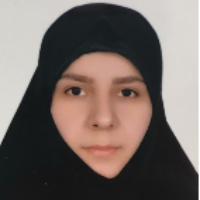فهرست مطالب f. ansari
-
Background
We introduced Mask R-CNN+CNN as a deep learning model to classify COVID-19 and non-COVID-19 cases. Radiomic features relevant to COVID-19 was presented for Iranian and other nationalities.
Materials and MethodsChest CT images from 800 COVID-19 positive and negative patients were studied. The automated volume of the lung and segmentation of COVID-19 lung lesions were implemented using 3D U-net, Capsule network, and Mask R-CNN on annotated CT images. Deep learning models designed were based on Mask R-CNN, CNN, and Mask R-CNN+CNN algorithms to classify COVID-19 cases. We also explored radiomic features relevant to the COVID-19 pandemic in the lungs for chest CT images and implemented random forest (RF), decision tree (DT), and gradient boosting decision tree (GBDT) algorithms on two datasets.
ResultsThe Mask R-CNN+CNN model demonstrated a higher classification accuracy (96.39 ± 2.94) compared to the Mask R-CNN and CNN models. The RF algorithm had greater power in differentiating relevant COVID-19 radiomic features compared to DT and GBDT, with an accuracy of at least 91 and an AUC of at least 985 in both datasets. We identified six radiomic features that were relevant to the pathological characteristics of COVID-19 positive/negative patients and were common across all datasets.
ConclusionThis study emphasizes the power of Mask R-CNN+CNN with a ResNet-101 backbone as a CNN algorithm that utilizes bounding box offsets output from Mask R-CNN as the input for classifying COVID-19 cases. Radiomic features extracted from lung CT images might aid the diagnosis of COVID-19 in patients at various stages of the disease.
Keywords: Machine learning, COVID-19, Computed tomography, Mask R-CNN+CNN, Deep learning} -
اجاره کوتاهمدت اراضی کشاورزی، با وجود برخی منافع، پیامدهای منفی از جمله، استفاده بیرویه از آب، آفتکشها و کودهای شیمیایی و درنتیجه تخریب اراضی به دنبال داشته است. چرا مالکان اراضی کشاورزی، عمدتا در قالب قراردادهای اجاره کوتاهمدت، اراضی خود را اجاره میدهند و قراردادهای بلندمدتتر رواج چندانی ندارد؛ با وجود اینکه قراردادهای بلندمدتتر، سبب تشویق به سرمایه گذاری بیشتر و استفاده پایدارتر از اراضی کشاورزی میشود. تحقیق حاضر بر اساس جهانبینی پسااثباتگرایی، رهیافت کمی و راهبرد پیمایشی را به منظور واکاوی عوامل موثر بر مشارکت مالکان اراضی کشاورزی در بازارهای اجاره بلندمدتتر اتخاذ کرده است. با استفاده از نمونه گیری چندمرحلهای، 250 نفر از بین مالکان اراضی کشاورزی شهرستان رزن که در پنج سال گذشته حداقل یکبار زمین خود را اجاره داده بودند، انتخاب شد. این مطالعه نشان داد انگیزه های مالکان در اجاره اراضی خود با توجه به محل سکونت (شهر/روستا) متفاوت است. موانع و عوامل پیشران شناساییشده که نیازمند توجه در سیاستگذاری هستند، عمدتا بر موضوعات امنیت حقوق مالکیت اراضی کشاورزی، صلاحیت اجارهکاران و روابط خویشاوندی با اجارهکاران، ریسک بالا و میزان سوددهی فعالیت های کشاورزی و محدودیت سرمایه در نواحی روستایی متمرکز هستند.
Although it has some benefits, short-term farmland rental transactions have had negative consequences such as excessive use of water, overuse of chemical fertilizers and pesticides, and farmland degradation. Why are landowners more engaged in short-term land rental contracts and less involved in longer rental contracts, that are more associated with incentives to invest and sustainably use farmland? Based on a post positivist worldview, the present study has chosen a quantitative approach and used a survey strategy to explore factors affecting the participation of landholders in longer farmland rental markets. Using multi-stage sampling, 250 landholders in Razan County who had rented their land, at least once in the past five years, were selected. The study indicated that the landholders' motivations to rent out their farmlands changed by their place of residence (rural/urban). The identified barriers and drivers that require policy attention broadly focus on the security of farmland property rights, competence of tenants and kinship contracts, high risk and profitability of farming activities, and capital constraints in rural areas.
Keywords: Farmland investments, Rental motivations, Tenants competencies}
- در این صفحه نام مورد نظر در اسامی نویسندگان مقالات جستجو میشود. ممکن است نتایج شامل مطالب نویسندگان هم نام و حتی در رشتههای مختلف باشد.
- همه مقالات ترجمه فارسی یا انگلیسی ندارند پس ممکن است مقالاتی باشند که نام نویسنده مورد نظر شما به صورت معادل فارسی یا انگلیسی آن درج شده باشد. در صفحه جستجوی پیشرفته میتوانید همزمان نام فارسی و انگلیسی نویسنده را درج نمایید.
- در صورتی که میخواهید جستجو را با شرایط متفاوت تکرار کنید به صفحه جستجوی پیشرفته مطالب نشریات مراجعه کنید.



